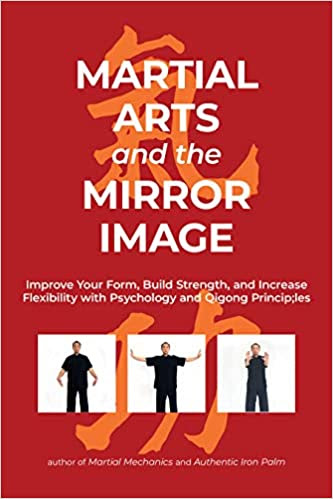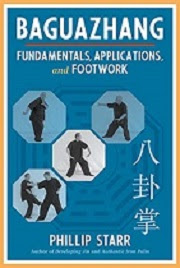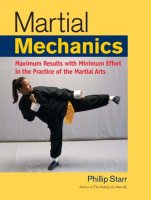The
little voice in my head wouldn't calm down. “You need to write
about the coiling power”, it said. “For future generations, you
must write it down.” The nagging was constant but I was hesitant;
no one had attempted to write a book about this subject. I had seen
it mentioned in a small handful of Chinese martial arts books but the
information they provided was insufficient and in many cases, it was
just plain wrong. Writing a book on this subject and presenting the
information that had been passed down to me by my teacher, Master W.
C. Chen, certainly wouldn't make a lot of people happy.
Sure,
I'd seen several videos on the subject that had featured
highly-respected and world famous “masters” performing various
and sundry training exercises. Some of them had a notion of how this
enigmatic power could be developed but their demonstrations were
woefully inadequate. The more I watched, the more convinced I became
that they honestly didn't know much about the subject.
I
asked my two most senior students what they thought. They told me
that they felt that the information needed to be preserved in
writing. They were very excited about the project... but I wondered.
After all, this is an aspect of training (in the neijia) that really
requires a “hands on” approach and a book can't possibly provide
that. In days long past, teachers of this arcane art would instruct
only a small handful of students at a time. It is my belief that the
main reason this special skill has all but disappeared is because the
real masters of it became very popular and were eventually swamped
with many new students. It simply isn't possible to teach the finer
aspects of coiling power to large groups of people. Like I said, it
requires a “hands on” approach.
At the
same time, I felt that my students were right. The information did
need to be preserved. However, it would likely ruffle more than a
few feathers. Some very well-known teachers of the neijia were
making truckloads of money through their seminars on coiling power
and what they were demonstrating was little more than a vague shadow
of the real thing. The real coiling power is very subtle and
difficult for the uninitiated to see; these contemporary “masters”
made large, overt movements that looked very flowery and beautiful.
But they lacked substance; they were all but completely devoid of
real power. Their fanciful demonstrations quickly attracted many
Western students who were impressed with their “smoke and mirrors”
exhibitions. It was, and still is, shameful.
One of
my teacher's best-known classmates was a gentleman known as Wang
Shujin. My teacher described him as “very tall and very fat.”
Sifu Chen didn't pull punches when it came to descriptions. His
classmate was, in fact, over six feet tall (which was very tall for a
Chinese person in those days), and weighed more than 300 lbs. Wang
eventually taught in Japan where he gathered a very large following.
In the main, he taught taijiquan but he also taught a few groups
xingyiquan and baguazhang. Several Japanese martial arts enthusiasts
didn't appreciate Wang's efforts to introduce neijia to the Japanese;
after all, this occurred in the 1950's and memories of WWII were
still pretty raw.
Wang
was challenged numerous times by teachers and students of karate and
jujutsu but his skill never left him. He remained undefeated. On
one occasion, Wang was challenged by two high-ranking jujutsu
practitioners. As usual, he readily accepted their offer to “cross
hands.” The first man quickly grabbed Wang's arm and was rendered
unconscious almost instantly when Wang caressed him with his fist.
The other aggressor though he could do better and grasped Wang in a
hug from the rear. It is said that Wang, whose arms were pinned to
his sides, shook his body as a dog shakes off water. His opponent
collapsed on the spot and was rushed to a hospital, suffering from a
couple of broken ribs and internal bleeding!
What
Wang had done was to use the coiling power and emit it through his
whole upper body. I suppose his foe would have felt as though he'd
latched onto a huge blender! Truly, Wang was a master of this art.
Such skill is not seen today. The hucksters would tell similar
stories but they couldn't possibly demonstrate it. Those of you who
know me will chuckle when I say that I decided not only to ruffle
their feathers; I'd pluck them! And so I started to work.
I
regarded this project to be of the utmost importance. I know this
statement isn't going to help me win the “Most Popular Kung-Fu
Teacher of the Year” award, but let me say that if any of the
neijia – taijiquan, xingyiquan, or baguazhang – aren't practiced
with the (genuine) coiling power, they are NOT really neijia and
they're no different than any other percussive martial art. And the
painful truth is that the vast majority of neijia enthusiasts in the
world (including China) - teachers and students alike - have no clue
about developing or applying this special power.
There
were many times that I wondered if I'd bitten off more than I could
chew. This subject is more than a little difficult to put into
writing. To make things even more complicated, I moved to southern
China! The photos were done by students and friends in the U.S. and
I thought they did a magnificent job. It made me wonder if it was
because I wasn't there (as I had been in previous projects) to whine
and complain! Adjusting to life in China made things even more
difficult and I honestly wondered if this book would ever be
completed.
In the
end, I was very pleased with the book. It was the very best that I
could do, the best instruction that I could provide without actually
being physically present. I'm anxious to see how this book will be
accepted by the neijia community.














